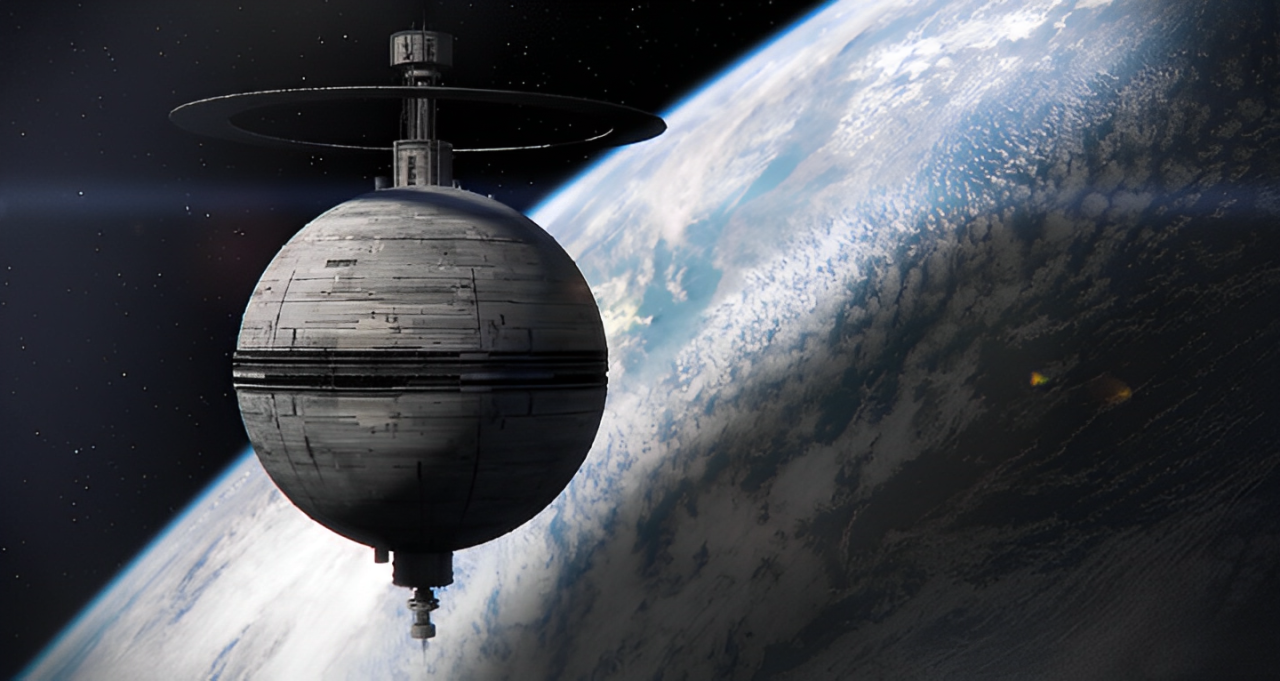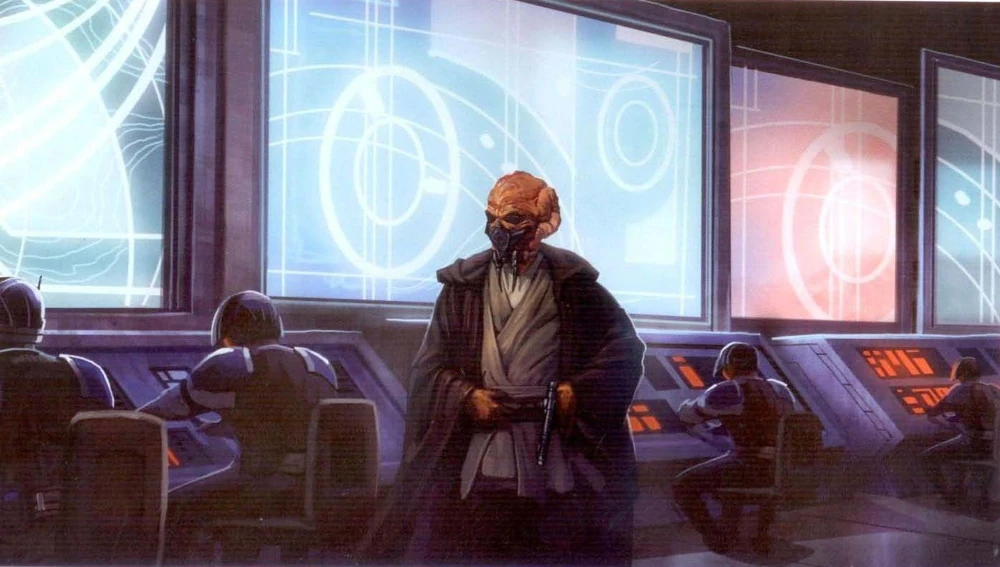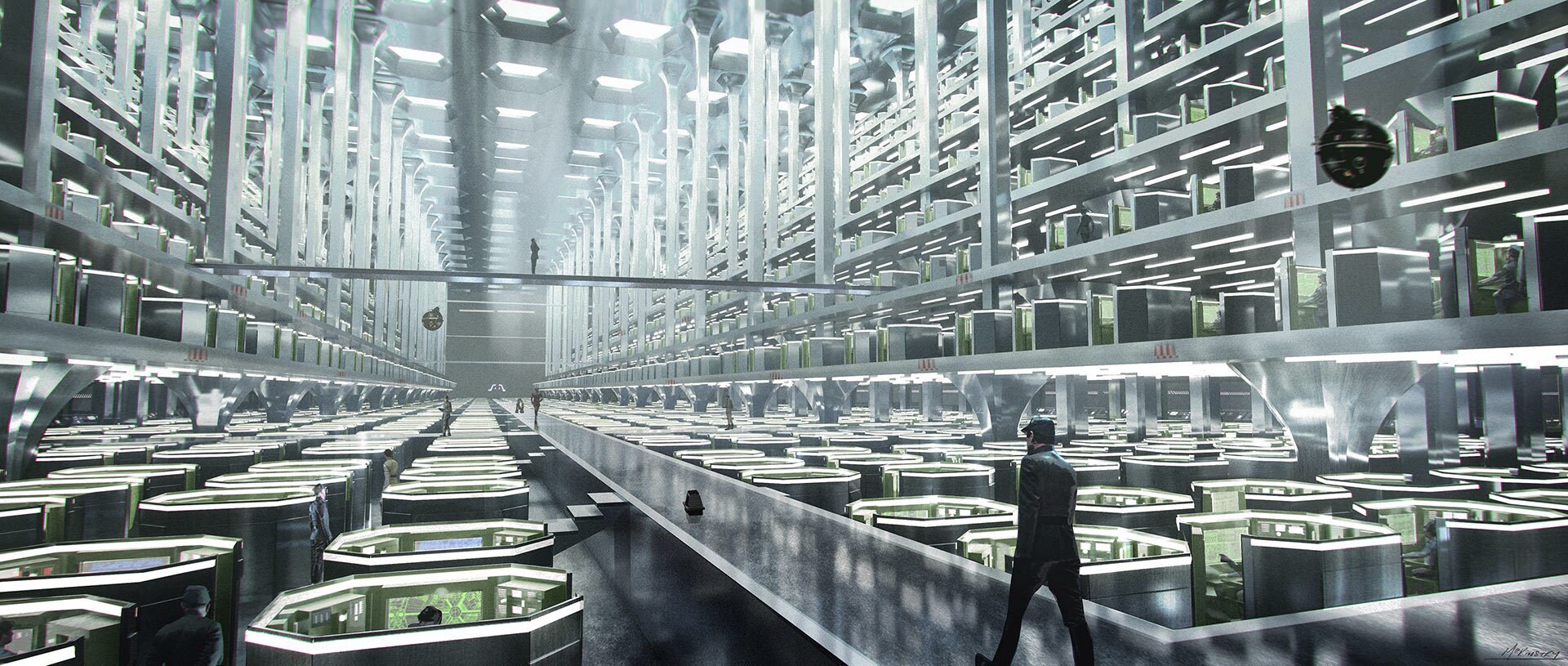Well-Known Member


- Intent: To create an InterGalactic Trade & Commerce Station able to move up and down the various Trade Routes on the Chaos Galactic Map, and provide a focus point for Economic Roleplay and Corporate Intrigue.
- Image Source:
- Canon Link: N/A
- Permissions:
- Primary Source:

PRODUCTION INFORMATION
- Manufacturer:
- Affiliation:
- Station Use
- Market Status:
- Closed-Market Status
- Model:
- Trade Federation Model III-2000 InterGalactic Commercial Trade Hub - Meniium-Scrani Industrial Station
- Production:
- Unique Production
- Material:
- Quadanium, Durasteel, and Impervium Armor Plating
- Matrix-Trimantium-impregnated Alusteel Skeletal Frame
- Heavily Reinforced Duraplast Hull Liner with Anti-Ionic Mesh
- Dallorian Alloy and Agrinium Panels
- Turadium Blast Doors and Shields
- Laminanium Structural Plating
- Glasteel Viewports
- Various Starship Components

TECHNICAL SPECIFICATIONS
- Classification: Space Station
- Length: 220,000m
- Width: 220,000m
- Height: 220,000m
- Armament: None
- The Meniium-Scrani Industrial Station is covered with a formidable array of anti-starfighter weaponry and point-defense turrets around vulnerable sections, although these are not designed with intent to engage in offensive maneuvers.
- Defenses: Extreme Classification
- Primary Shield Array
- Secondary Shield Array
- Tertiary Shield Array
- Primary Defense Emplacements
- Primary Shield Array
- Hangar Space:
- The Meniium-Scrani Industrial Station is lined with various docking bays, hangers, and manufacturing facilities capable of supporting the considerably large population that resides aboard at anyone time. There are smaller docking bays spread across the outermost edges of the Industrial Station, capable of holding ships no larger than a cruiser although frigate size is best recommended. The bottom most hangers are able to fit ships up to massive size and weight without difficulty.
- Maneuverability Rating: Low
- Speed Rating: Low
- Hyperdrive:Class 12
- The Meniium-Scrani Industrial Station relies on a combination of hyperdrives for movement through Hyperspace, Sub-Hyperspace, and Otherspace such as the HS-10 "Hermes" Class Hyperdrive, the Hermóðr-class 0.5 Hyperdrive, and the T-17 Hyperdrive Generator. Because of the immense energy requirements, the primary hyperdrive system can only propel the station through any of these spaces at class 12 speed.

STANDARD FEATURES
- Standard Countermeasures
- Standard Engine Unit
- Standard Guidance Systems
- Standard Hyperdrive System
- Standard Life Support Systems
- Standard Shielding System
- Standard Targeting Systems
- Credit Markets
- AvCoin 1.0 | Blockchain
- Communications and Sensor Systems
- Countermeasures
- External Components
- Hyperdrive Systems
- Tractor Beam System
- Internal Systems
- Anticoncussion Field
- BRT Supercomputers [x8]
- Battle Analysis Computers [x8]
- DB-SR01 'Powerslave' Droid Brain Network
- Detention Systems
- Medical Systems
- Navigation Systems
- Production Systems
- Remote Slicers
- Security Systems
- Transportation Systems
- Power Generation
- Propulsion Systems

STRENGTHS
- Defensive Fortress |
- Though having no offensive weaponry of any sort, the Meniium-Scrani Industrial Station is a massive space station capable of withstanding all but the most intense of bombardments. Multiple shield arrays and defensive emplacements, as well as thick armor plating ensures that the center for Galactic Commerce and Trade can't be easily threatened.
- Power Generation |
- The Meniium-Scrani was constructed with the most advanced energy generation systems available on the galactic market, allowing the massive space station to handle the millions of transactions and credit exchanges happening every second, and operate its sub-systems and internal systems for a considerably long time. Thus maintenance of these systems are considered top priority.
- Self-Sufficient |
- The Meniium-Scrani was designed to be entirely self-sufficient, being equipped with molecular furnaces, various automated facilities and construction yards, production lines, food generation, and much more in order to house the army of workers and accountants. This strive for independence was made to detach the station from supply lines in the event of an emergency, or governmental collapse.
- Offensive Folly |
- The entire purpose of the Meniium-Scrani Industrial Station is the generation of resources and exchanging of credits on a massive scale, and thus the main focus was on protection against pirates and other vagabonds with formidable shielding, leaving no offensive weaponry to combat capital ships. While it does possess a formidable defensive array of anti-starfighter lasers and point-defense systems for protection against starfighters and freighter class vessels, these emplacements will do little against larger ships.
- Immense Size |
- The Meniium-Scrani Industrial Station is quite perhaps the largest station ever constructed, and thus the sheer size of the space station is its greatest weakness. It is impossible to engage in stealthy maneuvers and presents a enticing target to enemies. The sheer size of each individual corridor would be enough to confuse both the enemy and the station's own defenders. Capital Ships would have little trouble in targeting the Space Station.
- Energy Unpredictability |
- While the station does come equipped with the most advanced energy generation equipment that the Trade Federation can buy, the sheer amount of energy flowing through the station and its sub-systems is unpredictable and seems almost like a ticking timebomb. Should the systems fail it would be destruction on an unparalleled scale, and as such only the most skilled technicians and droids are allowed to even touch the control panels, let alone be in the same room.

DESCRIPTION
During the era of the Clone Wars, The Techno Union composed many prototype designs of large-scale space stations that could operate freely around the various hyperspace lanes and prominent supply planets. Many of these designs were rejected out of principle by the Separatist Council as the shear cost of such an undertaking was considered unprofitable and almost akin to self-bankruptcy practices, although some were never completed before the war came to an end with the death of the Confederacy on Mustafar by the hand of Darth Vader.
The Galactic Empire; the dominant government formed from the remains of the Galactic Republic and the Confederacy took an acute interest in the projects composed by the Techno Union as a viable alternative to the Death Star Projects as delays and interference from local resistance cells put the project further behind schedule. Smaller space stations were constructed around the time that the Death Star Project was being finished, setting them up across the dozens of hyperspace routes that lead to the Galactic Capital of Coruscant but found them difficult to maintain and susceptible to pirates and other criminal syndicates, as the Galactic Civil War occurred between the Empire and the Alliance to Restore the Republic.
The New Republic eventually took over these stations and converted them into Rapid Deployment Units, allowing small squadrons of starfighters to patrol the vastness of space when the New Republic Fleets were busy dealing with the Imperial Warlords and their various Remnants spread across the galactic frontier. During this time the original design was brought by Kuat Drive Yards from the New Republic Government and they improved the overall functionality and reestablished their purpose as trading hubs and manufacturing ports around Kuat and its surrounding Systems. It would remain within the hands of Kuat Drive Yards over the centuries as the company changed ownership from one person to another.
In 851 ABY during the Incursion Timeline, The Design was purchased by a Skakoan Engineer by the name of Sulka Tsul. Tsul would use more mathematical thinking and pragmatism to combine the various stations mentioned on the blueprints into one giant megastructure, able to handle currency and credit exchange without relying on a single capital planet like Coruscant.
Although at the time there was no willing investors, able to take on such a project on such scale as this, and thus the design was put on the backburner for quite some time until resources came available. The Skakoan Engineer later came to the attention of the New Imperial Order after their rebellion against the Sith Empire in 864 ABY during the Annihilation Timeline with the Sith Empire eventually capturing the Construction Site and using its limited manufacturing abilities to their advantage during the Civil War, with it being damaged quite considerably by the New Imperial Fleet.
Looking to get a jumpstart on the Imperial Economy, Director Gat Tambor would purchase the intellectual rights of the Station and begin reconstruction in order to provide the NIO with a prominent trade port and manufacturing hub. Re-Construction of the Station was full of delays and expected departures as the sheer size and scope of the project meant that it was not going to be completed for some time, as the New Imperial Order began to establish themselves as a formidable power within the galaxy and acquire more and more planets under their rule.
The Station was finally finished in 900 ABY within the Galactic Alliance Territory during the current tenure of the Director of the Trade Federation Rulonom Laborr with considerable financing by other corporate entities such as the Commerce Guild and the InterGalactic Banking Clan. The cost of the Project nearly led the bankruptcy of the entire Federation and its subsidiaries.
Last edited:












